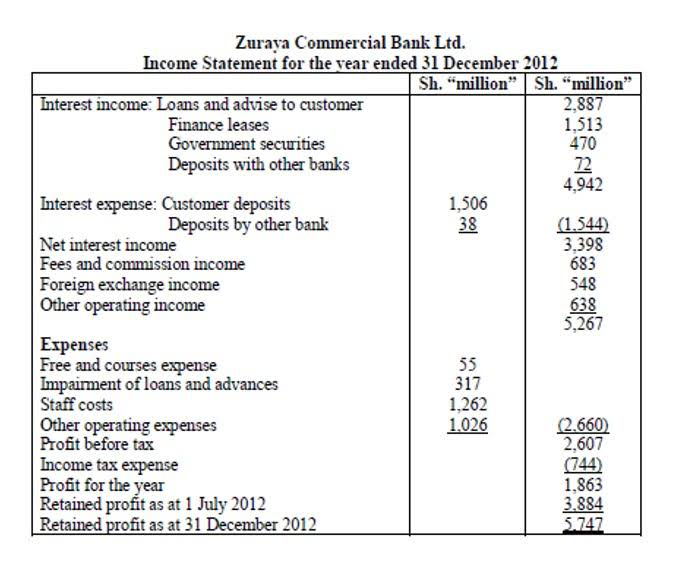
For instance, an investor considering funding a startup might use pro forma projections to evaluate the potential impact of different growth strategies on revenue and profitability. This level of insight enables investors to weigh the risks and rewards of their investment choices more accurately. One of the most significant advantages of pro forma financial statements is their ability to facilitate long-term planning. Businesses can use these projections to set realistic financial goals and develop comprehensive plans to achieve them.
Building Pro Forma Statements
- Learn how to build, read, and use financial statements for your business so you can make more informed decisions.
- Examining the assumptions behind these forecasts, such as payment terms with customers and suppliers, ensures reliability.
- Companies that provide large dollar amounts of stock-based compensation will incur expenses that should be recorded on GAAP-based income statements.
- Pro forma financial statements are valuable tools for forecasting potential financial outcomes based on hypothetical scenarios and assumptions.
- For instance, declining GAAP earnings despite stable pro forma figures may indicate underlying operational challenges.
- Pro forma financial statements are constructed with several integral elements that collectively provide a comprehensive view of a company’s projected financial health.
For instance, amendments to the Internal Revenue Code (IRC) can impact projected expense figures. Compliance with new accounting standards, such as IFRS 16, which requires the capitalization of lease liabilities, may alter the presentation of lease expenses and affect financial ratios. Cash flow statements are particularly important for financial planning as they provide gross vs net insight into how the business will finance its operations, pay off debts, and manage capital expenditures.
- The projection starts with year-to-date cash flows from January 1st to August 31st (the current date).
- Evaluating these projections requires considering external market factors and internal company dynamics.
- It provides an estimate of future revenues, expenses, and profits, aiding in decision-making and financial planning.
- Get free guides, articles, tools and calculators to help you navigate the financial side of your business with ease.
- Pro forma statements may be created using an Excel template or other financial software tools.
- Anticipated fluctuations in commodity prices could also affect the cost of goods sold.
- Additionally, the expense forecast helps in determining the break-even point, which is vital for assessing the feasibility of new projects or expansions.
FAQs About Pro Forma Financial Statements

Adhering to reporting standards is essential to ensure the credibility and reliability of pro forma financial statements. Frameworks such as GAAP or IFRS provide guidelines for consistency and transparency. Pro forma statements must disclose the assumptions and methodologies used, enabling stakeholders to understand the basis of the projections. For instance, IFRS requires disclosure of significant assumptions and their sensitivity to changes. These components come together to help you understand financial statements definition your business from both a finance and accounting perspective.

Types of pro forma financial statements

These scenarios can be run through the model to assess the impact on the financial statements. Companies that provide large dollar amounts of stock-based compensation will incur expenses that should be recorded on GAAP-based income statements. Pro forma statements are an effective tool to analyze the effect of a large transaction. Businesses that are considering a merger, company acquisition, or raising more capital generate pro forma statements. Accounting for nonrecurring events is crucial to presenting a clearer picture of ongoing financial performance. Events such as asset sales or litigation settlements can distort results if not properly adjusted.
Pro forma financial statements consist of several elements that collectively offer a comprehensive view of a company’s projected financial landscape. The income HVAC Bookkeeping statement forecasts revenues and expenses based on anticipated market conditions, strategic initiatives, and economic shifts. For instance, a company might project increased revenue due to a planned product launch or expansion into new markets. Once the assumptions and adjustments are defined, the pro forma income statement can be created. This document will show projected revenues, costs, and net income for a specific future period. The statement should also include separate columns to show the difference between historical financial information and the expected pro forma income.

- Backed by 24/7 customer support, Rho offers business checking accounts and enterprise-grade spend management – accounts payable, corporate cards, and expense management – with no monthly fees.
- Evaluating CapEx includes analyzing the projected return on investment (ROI) and the payback period for major expenditures.
- Managers can also make assumptions about cash payments and collections to determine the impact on the monthly cash balance.
- All in all, the process of preparing a pro forma balance sheet is much the same as preparing a normal balance sheet.
- Unlike standard financial statements which reflect the company’s actual historical performance, pro forma statements are based on certain adjustments or hypothetical scenarios.
Management can assess the impact on revenues and expenses and decide which decision makes the most financial sense. Managers can also make assumptions about cash payments and collections to determine the impact on the monthly cash balance. Assume, for example, that a seasonal business decides to promote discounts on certain products to drive higher customer traffic. Pro forma financial statements differ, based on the time period used and the data reported in each statement.
- For instance, executives might present an optimistic revenue outlook to bolster investor confidence or justify strategic initiatives.
- The simplest method to prepare a pro forma income statement, considering what are pro forma financial statements, is the percentage of sales method.
- These projections enable businesses to anticipate future financial conditions and make strategic decisions with greater confidence.
- These elements create a comprehensive view of a company’s potential financial landscape and guide stakeholders in making informed decisions.
- Cost of goods sold (COGS) includes costs directly related to producing the product or service.
- These statements must follow strict accounting rules to ensure transparency and consistency.
Managers use historical financial data and assumptions to create the income statement, balance sheet, and the statement of cash flows. Pro forma statements may be created using an Excel template or other financial software tools. This post discusses pro forma financial statements and the common assumptions used to create the reports. You’ll learn some of the best practices for generating the statements and how the financial documents can improve business planning and forecasting.
